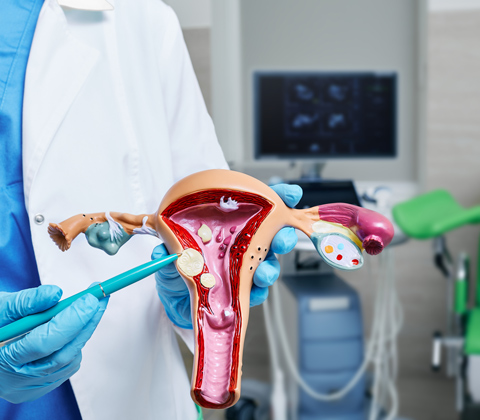Concerned about fibroids? Arrange a consultation with a private gynaecologist in Oxford

What are the symptoms of fibroids?
- Heavy or prolonged menstrual bleeding: This is the most common symptom of fibroids.
- Pelvic pain or pressure: This can be a dull ache or a sharp pain, and it may worsen during menstruation.
- Frequent urination or difficulty emptying the bladder: This is caused by pressure on the bladder from the fibroids.
- Pain during intercourse: This can occur if the fibroids are located in or near the cervix.
- Enlarged abdomen: This is more common with larger fibroids.
- Back pain: This can be caused by pressure on the nerves in the back.
- Difficulty getting pregnant or miscarriage: This is less common, but fibroids can sometimes interfere with fertility or complicate pregnancy.
How are fibroids diagnosed?
Diagnosing fibroids typically involves a combination of:
- Assessing your medical history: Your gynaecologist will ask about your symptoms and for how long you have been experiencing them.
- Physical Exam: A pelvic exam will be used to feel for any abnormalities in your womb.
- Imaging tests: These may include ultrasound or MRI scan to confirm the presence, size and location of the fibroids.
A range of treatment options can be considered, depending on factors such as your symptoms, fibroid size and location and your desire for future pregnancy.
Looking to find out more about how we can help?
To find out more about the treatment options we offer, please schedule a consultation with a gynaecologist.
Email Us
